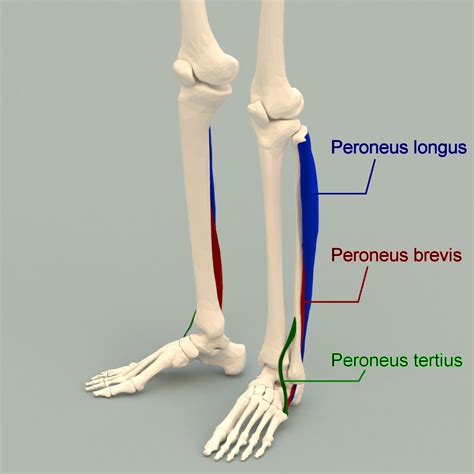Unraveling the Mystery of Extra Leg Tendons: Shedding Light on an Uncommon Anatomic Enigma
Beneath the skin’s surface, our bodies house a mesmerizing network of tendons, those resilient cords that bridge muscle and bone, enabling movement’s symphony. While most of us navigate life with the standard complement of tendons, some individuals find themselves with an extra leg tendon, an intriguing anatomical variation that sparks curiosity and raises questions.
Navigating life with an extra leg tendon can be a tale of both resilience and adaptation. Individuals may experience discomfort or stiffness, particularly during activities that demand repetitive leg movements. Understanding the purpose and implications of this unique tendon can empower individuals to manage any associated challenges and lead fulfilling lives.
The extra leg tendon, also known as the accessory peroneus quartus muscle, plays a supporting role in the intricate choreography of the ankle and foot. It originates from the fibula, the long bone running along the outer calf, and inserts into the fifth metatarsal, a bone located on the outer edge of the foot. While its primary function is to stabilize and evert the foot, its presence doesn’t necessarily imply a compromised gait or reduced functionality.
In essence, an extra leg tendon is an intriguing biological variation that can coexist harmoniously with the body’s overall mechanics. Understanding its existence and potential implications empowers individuals to navigate their unique physical landscape with awareness and resilience.
Unraveling the Enigma of the Extra Leg Tendon: Exploring the Peroneus Quartus Muscle
Unveiling the Peroneus Quartus: A Lesser-Known Leg Muscle

Deep within the intricate tapestry of the human musculature lies a relatively unheralded yet intriguing player: the peroneus quartus muscle. This enigmatic structure, concealed beneath its more prominent counterparts, plays a pivotal role in maintaining foot stability and facilitating movement. Embark on a journey to unravel the secrets of this hidden gem, delving into its anatomy, functions, clinical significance, and training implications.
Anatomical Intricacies: Deconstructing the Peroneus Quartus
The peroneus quartus, classified as a long, thin muscle, resides within the lateral compartment of the leg. It originates from the lateral aspect of the fibula, a slender bone spanning from the knee to the ankle. Its fibers gracefully descend distally, culminating in a slender tendon that courses behind the lateral malleolus, a bony prominence at the ankle’s outer aspect. This tendon then continues its trajectory, attaching to the base of the fifth metatarsal bone, a long bone in the foot.
Functional Significance: Uncovering the Peroneus Quartus’s Role in Movement
While the peroneus quartus may not command the spotlight, its contributions to foot mechanics are far from insignificant. Primarily, it serves as a stalwart guardian of foot stability, particularly during those dynamic moments of locomotion. By contracting, it everts the foot, a motion akin to turning the sole outward, thereby preventing the foot from rolling inward excessively – a condition known as overpronation.
Moreover, the peroneus quartus stands as an able ally in dorsiflexion, the upward movement of the foot at the ankle joint. This action proves indispensable during activities like climbing stairs or walking on uneven terrain.
Clinical Implications: Navigating Peroneus Quartus-Related Disorders
Despite its typically unassuming nature, the peroneus quartus can occasionally find itself embroiled in a host of ailments. Among these, peroneal tendonitis stands out as a common culprit, manifesting as an inflammation of the peroneal tendons, including the peroneus quartus tendon. This condition often arises from overuse or acute injuries, causing pain, swelling, and tenderness along the outer ankle.
Another potential adversary is peroneal nerve palsy, a condition stemming from damage to the peroneal nerve, which supplies the peroneus muscles. This nerve injury can lead to foot drop, a debilitating condition characterized by an inability to lift the foot at the ankle, rendering walking a significant challenge.
Training Considerations: Engaging the Peroneus Quartus for Optimal Performance
For those seeking to elevate their athletic prowess, incorporating exercises that target the peroneus quartus can yield substantial benefits. These exercises can enhance foot stability, reduce the risk of injuries, and improve overall athletic performance.
- Single-Leg Balance: Begin by standing on one leg, maintaining a steady stance for as long as possible. Gradually increase the duration over time to strengthen your peroneus quartus and improve balance.
- Resistance Band Eversion: Attach a resistance band to a sturdy object and secure the other end around the ball of your foot. Gently pull the band outward, resisting the movement with your peroneus quartus. This exercise effectively targets the muscle and enhances its stability-enhancing capabilities.
- Calf Raises: Engage in traditional calf raises, but with a slight twist. Perform the exercise with your feet turned slightly outward, emphasizing the role of the peroneus quartus in eversion and foot stability.
Conclusion: Appreciating the Peroneus Quartus’s Unsung Contributions
Though often overlooked, the peroneus quartus muscle holds immense significance in maintaining foot stability and facilitating movement. Its contributions to preventing overpronation and assisting in dorsiflexion are crucial for various activities, ranging from leisurely strolls to athletic endeavors. Understanding the anatomy, functions, and clinical implications of this enigmatic muscle empowers individuals to optimize their foot health and maximize their athletic potential.